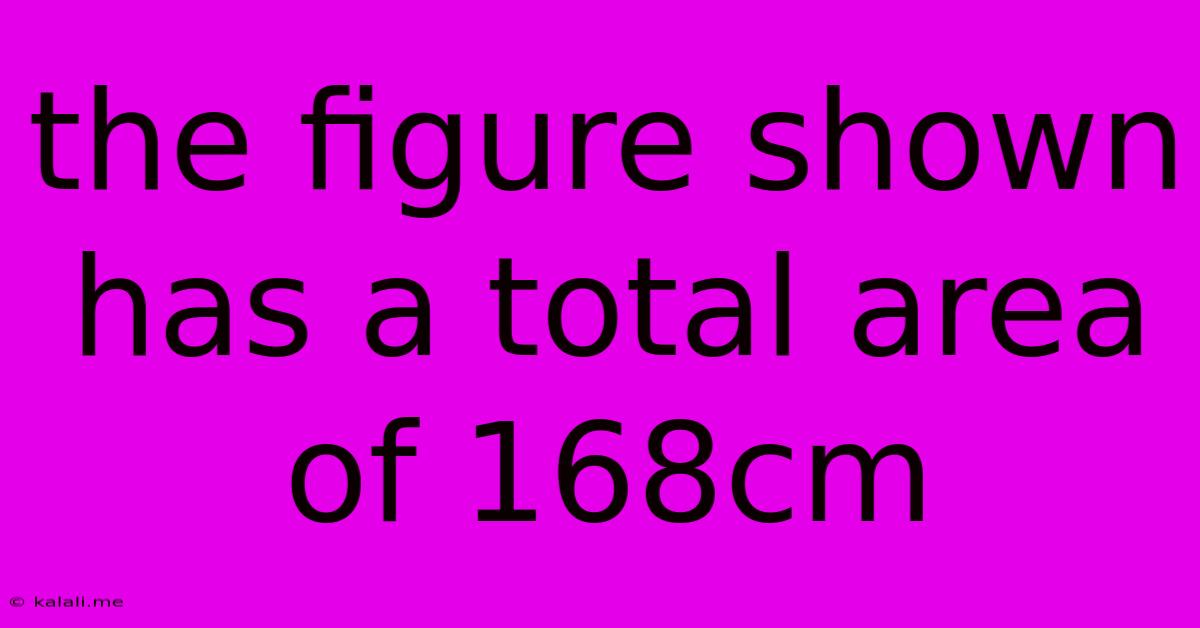The Figure Shown Has A Total Area Of 168cm
Kalali
Jun 15, 2025 · 3 min read

Table of Contents
Unlocking the Mystery: Solving for Unknown Sides in a Figure with a 168cm² Area
This article delves into the fascinating world of geometry, specifically tackling the challenge of determining unknown side lengths given the total area of a figure. We'll explore different approaches to solving this problem, focusing on logical reasoning and mathematical principles. Understanding how to approach these types of problems is crucial for students and anyone interested in enhancing their problem-solving skills in mathematics and related fields. Let's dive in!
The problem statement lacks the crucial information: What kind of figure is it? Is it a rectangle, a triangle, a circle, or a more complex shape? Knowing the shape is absolutely essential to calculating the unknown side lengths. We can't solve for unknowns without knowing the relevant area formula. Let's illustrate this with examples:
Example 1: A Rectangle with an Area of 168 cm²
Let's assume the figure is a rectangle. The formula for the area of a rectangle is:
Area = length × width
If we know the area is 168 cm², we need at least one more piece of information, such as the length or the width, to solve for the unknown side. For instance:
- Scenario A: If the length is 14 cm, then we can solve for the width: 168 cm² = 14 cm × width. Therefore, the width is 12 cm.
- Scenario B: If the ratio of length to width is 2:3, we can set up a system of equations to solve for both length and width. Let's say the length is 2x and the width is 3x. Then, 168 cm² = (2x)(3x) = 6x². Solving for x, we get x² = 28, and x ≈ 5.29 cm. Therefore, the length is approximately 10.58 cm and the width is approximately 15.87 cm.
Example 2: A Triangle with an Area of 168 cm²
For a triangle, the area formula is:
Area = (1/2) × base × height
Again, knowing the area (168 cm²) is only half the battle. We need either the base or the height to calculate the missing dimension. For example:
- Scenario A: If the base is 24 cm, then 168 cm² = (1/2) × 24 cm × height. Solving for the height, we find it to be 14 cm.
- Scenario B: If we know the triangle is a right-angled triangle and the hypotenuse is a certain length, along with the base or height, we can use the Pythagorean theorem (a² + b² = c²) to solve for the missing dimensions.
Example 3: Other Shapes
The approach is similar for other shapes. The key is to:
- Identify the shape: This determines the appropriate area formula.
- Identify the known values: This includes the area and any given side lengths or angles.
- Apply the appropriate formula: Use the formula to solve for the unknown side lengths.
- Consider other geometric relationships: Pythagorean theorem, trigonometric functions, etc., might be necessary depending on the shape and the available information.
This article highlights the importance of fully understanding the problem statement. Without knowing the shape of the figure, solving for the unknown sides is impossible. Providing the complete context is crucial when seeking solutions to geometry problems or any mathematical problem for that matter. Remember to always double-check your calculations and consider multiple approaches to verify your answer.
Latest Posts
Latest Posts
-
Decimal Greater Than Less Than Calculator
Jun 16, 2025
-
In A Right Skewed Distribution Which Of The Following Is True
Jun 16, 2025
-
University Of South Carolina Beaufort Acceptance Rate
Jun 16, 2025
-
Which Of The Following Is An Example Of Electromagnetic Waves
Jun 16, 2025
-
Which Is Not Part Of The Respiratory System
Jun 16, 2025
Related Post
Thank you for visiting our website which covers about The Figure Shown Has A Total Area Of 168cm . We hope the information provided has been useful to you. Feel free to contact us if you have any questions or need further assistance. See you next time and don't miss to bookmark.